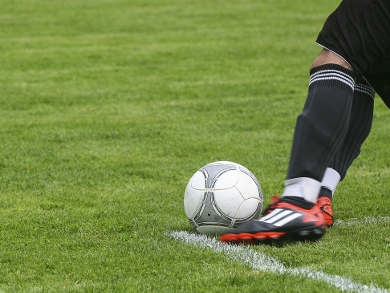Testosterone, a steroid hormone, can increase muscle mass and thus be used for doping in professional sports. The ratio between testosterone (T) and the naturally occuring non-performance-enhancing epitestosterone (E) can be an indicator of abuse.
Norbert Baume, Swiss Laboratory for Doping Analyses, University Center of Legal Medicine, Geneva and Lausanne, Switzerland, and colleagues have performed a longitudinal analysis of the results of 4,195 urine samples collected from 879 soccer players between 2008 and 2013. The project was initiated by UEFA, the European Football Association, to determine whether including testosterone/steroid testing in their anti-doping program would be helpful.
The researchers found that the rates of steroid doping among the tested players should be below 7.7 %. 68 of the 879 players showed atypical T/E ratios, which can indicate, but do not necessarily proof, abuse. The team concludes that testing for steroids in soccer player’s urine should be a useful tool, and UEFA has decided to introduce the urinary steroidal module from the start of the next European football season.
- Evaluation of longitudinal steroid profiles from male football players in UEFA competitions between 2008 and 2013,
Norbert Baume, Hans Geyer, Marc Vouillamoz, Richard Grisdale, Mike Earl, Rodrigo Aguilera, David A. Cowan, Magnus Ericsson, Günter Gmeiner, Dorota Kwiatkowska, Nassia Kioukia-Fougia, Adeline Molina, João Ruivo, Jordi Segura, Peter Van Eenoo, Nicolas Jan, Neil Robinson, Martial Saugy,
Drug Testing Anal. 2015.
DOI: 10.1002/dta.1851
Also of interest:
- The Science of Football,
ChemViews Mag. 2012.
DOI: 10.1002/chemv.201200063
What would a football game be without chemistry?




